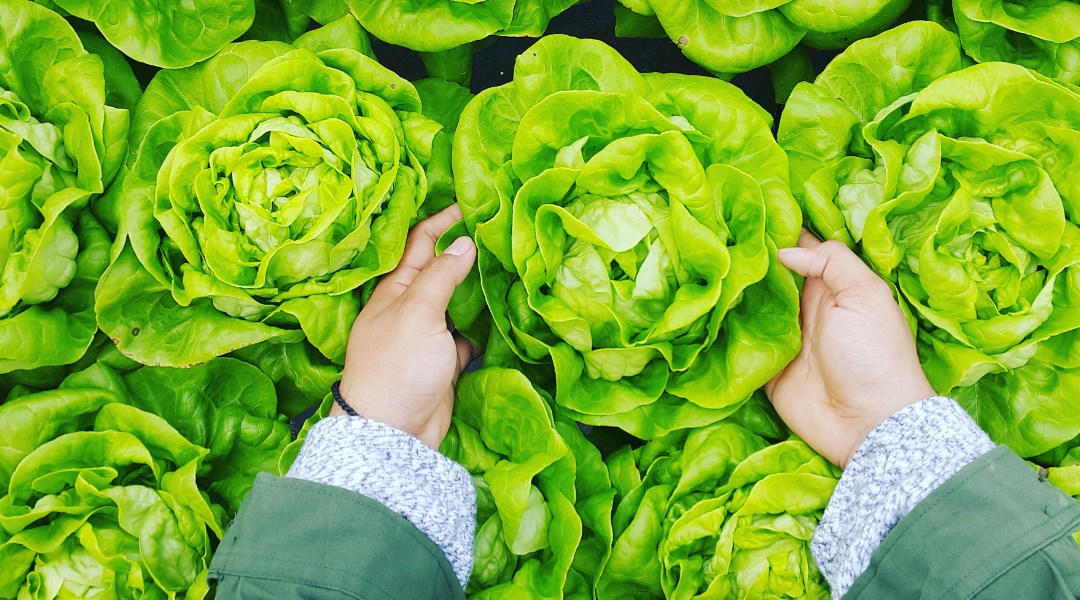In recent years, we have witnessed the alarming scarcity of lettuce across the market shelves on a global level. In the Fall of 2022, California’s lettuce farms, which are responsible for a large portion of the United States’ supply of the leafy green, were struck by an insect-borne virus (the impatiens necrotic spot virus) damaging over 50% of farmers’ crops. This, mixed with scorching temperatures, led to a lettuce shortage that sent lettuce prices skyrocketing 25%. Unfortunately, this isn’t the first lettuce shortage to impact the market and it likely won’t be the last. The good news is that there is a way to prevent another lettuce shortage: embracing hydroponics.
The Impact of a Lettuce Shortage
Lettuce shortages arise when a variety of factors combine to disrupt the conventional farming methods. These issues range from extreme weather conditions, diseases, pests, and transportation challenges. Traditional field farming, which relies on soil and is at the mercy of external elements, often falls victim to these obstacles, leading to the disruption of lettuce supply chains.
When this happens, it has profound consequences for both crop growers and consumers. For growers, the scarcity of lettuce results in lost revenue and decreased profitability. They are forced to contend with unpredictable market conditions and navigate the financial challenges that arise from the low supply. It’s basic economics: low supply + high demand = higher prices. Lettuce, known for its nutritional value and versatility, becomes unaffordable.
Hydroponics: A Game-Changer
Hydroponics, a soilless cultivation method, offers a promising solution to preventing another lettuce shortage. By taking the cultivation of lettuce indoors and controlling the growing environment, hydroponics minimizes the risks posed by external factors. Here’s how hydroponics reduces the chance of a lettuce shortage:
Climate Control:
Hydroponics allows growers to create the ideal climate for lettuce growth away from unpredictable weather conditions. By adjusting temperature, light, and humidity levels, hydroponic systems provide lettuce plants with optimal conditions year-round.
Disease and Pest Management:
Field farming is susceptible to various diseases and pests that can wipe out entire lettuce crops. In hydroponics, plants are grown in a controlled environment, reducing the risk of these threats. Growers can closely monitor plant health and take swift action in case of potential issues, meaning problems like what the California lettuce farmers dealt with are avoided.

Grown in a controlled climate, lettuce thrives in a hydroponic system.
Water Conservation:
Traditional farming methods often require excessive water usage, contributing to environmental strain. Hydroponics uses up to 90% less water than traditional farming by recycling and reusing water within the closed-loop system. This sustainable approach not only conserves water, but it also reduces the strain on natural resources needed for growing.
Increased Crop Yield:
Hydroponic systems ensure optimal nutrient uptake and maximize plant growth. Not only more space-efficient than traditional farming solutions, Hydronov’s climate controlled floating raft technology produces an average of 18 harvests per year, that’s over three times as many harvests compared to soil-based greenhouse growing systems and a whopping six times more harvests than outdoor soil farming.
Avoid a Lettuce Shortage with Hydronov
The key to avoiding another lettuce shortage starts by recognizing hydroponics as a superior cultivation method. At Hydronov, our state-of-the-art hydroponic systems eliminate the reliance on external factors and provide a controlled growing environment, ensuring a stable supply of lettuce for growers to distribute and buyers to consume at a reasonable price. The future of lettuce, and indeed the entire agricultural industry, lies in hydroponics. Learn more about the advantages of hydroponics and how Hydronov is facilitating growers with the leading edge in agricultural technology.


